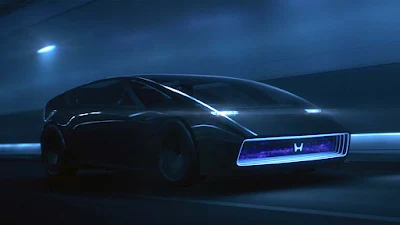Honda has confirmed that the Honda 0 Series—the brand’s new EV model range—will be launched in Asia, including the Philippines. This was confirmed by the President and CEO of Asian Honda Motor Co., Ltd, Toshio Kuwahara.
The Honda 0 (Zero) Series is an integral part of the Japanese carmakers plan to have 40 percent of its global sales by BEV or FCEV by 2030 on the way to becoming a 100 percent BEV/FCEV brand by 2040.
Honda plans to launch a total of seven body derivates of the Honda 0:
- 2026 – mid-sedan / mid-sized SUV / entry-level SUV
- 2027 – large-size three-row SUV
- 2028 – compact SUV
- 2029 – small-size SUV
- 2030 – compact sedan
More recently, Honda has revealed more details on the Honda 0 Series.
Using a new EV platform compromised of a 2.0 GPa grade hot stamped ultra-high strength steel plate, the Honda 0 Series will have a low-height styling. The adoption of a thin battery pack and new e-Axle will help the carmaker realize a low center of gravity and lower weight. All in all, Honda says their next-generation EVs will weigh some 100 kilograms less than their initial EV models.
Powering the Honda 0 Series, the next-generation Honda e-Axle will have an inverter that’s downsized by some 40 percent thanks to a horizontal layout wherein it’s placed side-by-side with the electric motor. Meanwhile, the battery case will be around six percent thinner, and because the body structure is designed to disperse any impact collision, the extra space needed to protect the battery can be reduced resulting in a larger area available for mounting a battery.
When new, the Honda 0 Series is targeted to have a 483-kilometer (300-mile) range. As it gets older, Honda says they are striving to limit the degradation of battery capacity (range) to less than 10 percent after 10 years of use by applying energy management, battery degradation diagnosis, and prediction technology.
In terms of construction, the battery case will use mega casting which will significantly reduce the number of parts from more than 60 to just five. This will improve production efficiency. Honda will also expand its application to cover aluminum casting for body frame parts too.
Design-wise, the Honda 0 Series will use an active aerodynamic system in the form of its aero deflector. This either cuts air resistance or increase downforce for high-speed performance and stability. It will also have an integrated control system to control all “by-wire” devices which will include the steering, suspension, and brakes.
Powering the Honda 0 Series is an original vehicle operating system or OS. Developed by Honda, it will include natural voice commands, connected technologies as well as OTA (over the air) updates. Honda has confirmed functionalities include purchasing vehicle upgrades and added functionalities.
These features will include Level 3 automated driving (eyes off). This expansion will start with eyes-off technology available in traffic congestion on highways and will continue to evolve via OTA updates. Naturally, to further advanced its available automated driving tech, LIDAR-based sensors and high-definition cameras will be equipped.
The Honda 0 Series will debut in North America by 2026. This will be “close to the concept model” says Honda and will be positioned as the flagship of the entire range.


This is basically vaporware intended to make Honda appear good on the electrification front. Fact is, most of the "innovations" being mentioned in the PR piece are already being done by the likes of BYD and SAIC. Kuwahara-san needs to start showing tech that Honda currently has and not present their projected innovation curve as breaking news.
ReplyDeleteThe only vaporware here is comments like yours.
DeleteThe futuristic design of this Honda just like most EVs are ugly, plain and simple. The low clearance are impractical for our pock marked roads and the wind swept windshield design are a pain for ingress and egress. They should design practical cars and reign in these concept cars that are both hideous and impractical. Shifting to full EVs are costly and problematic as most EV owners have found out, with all the spontaneous combustion, range and charging anxieties and very low resale values.
ReplyDeleteAnd the only ugly around here are comments like yours, plain and SUPER simple. Honda has done the right thing and I am a Honda fan.
Delete